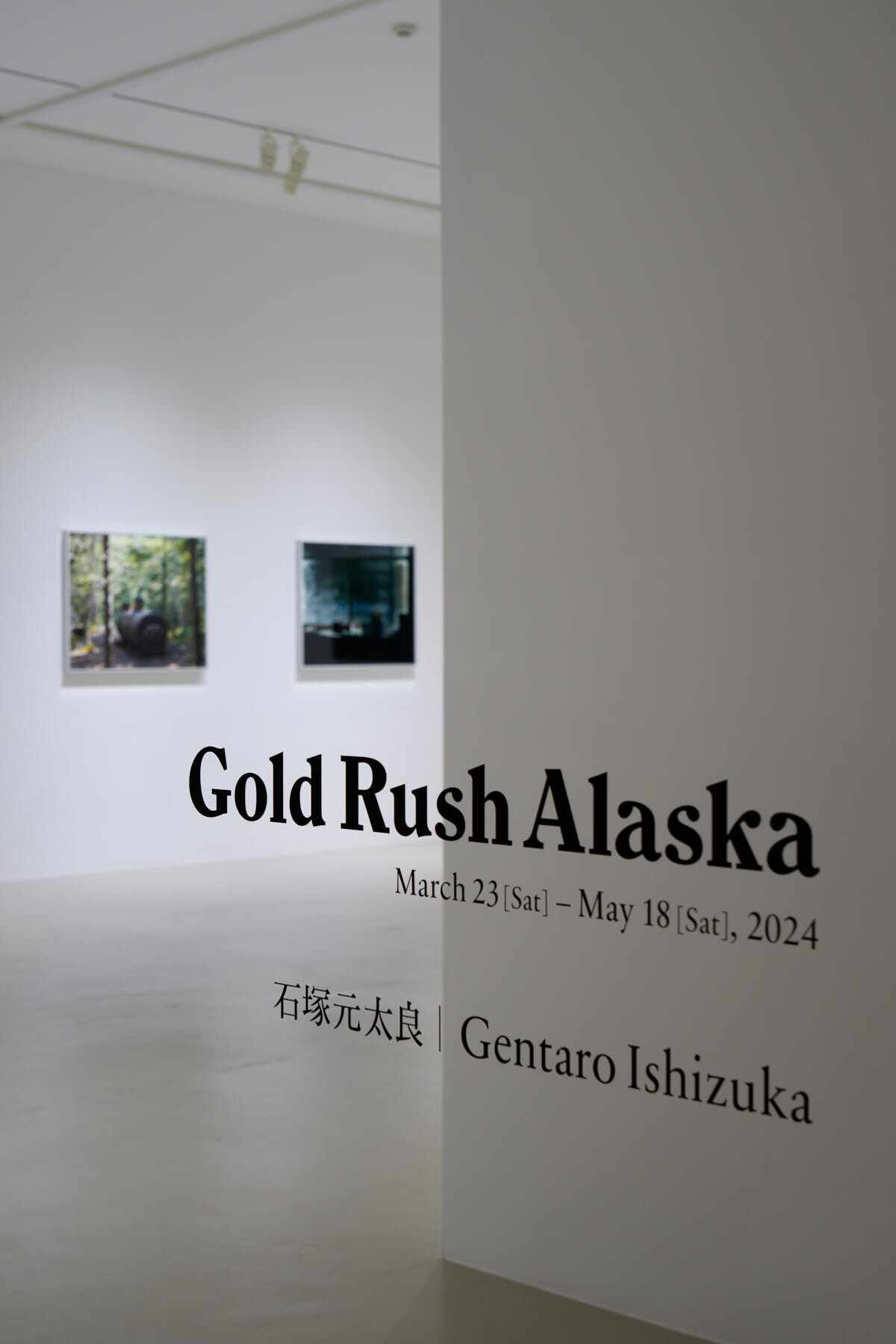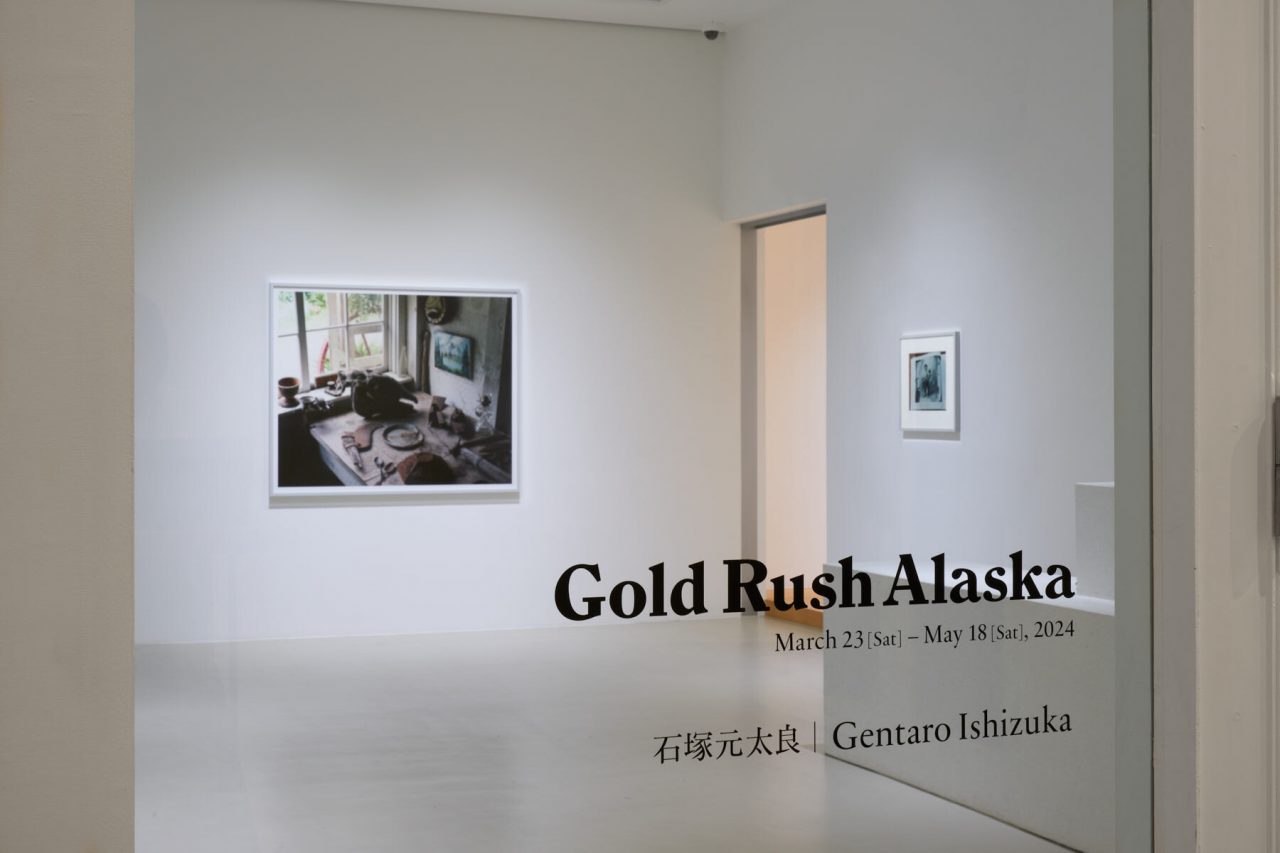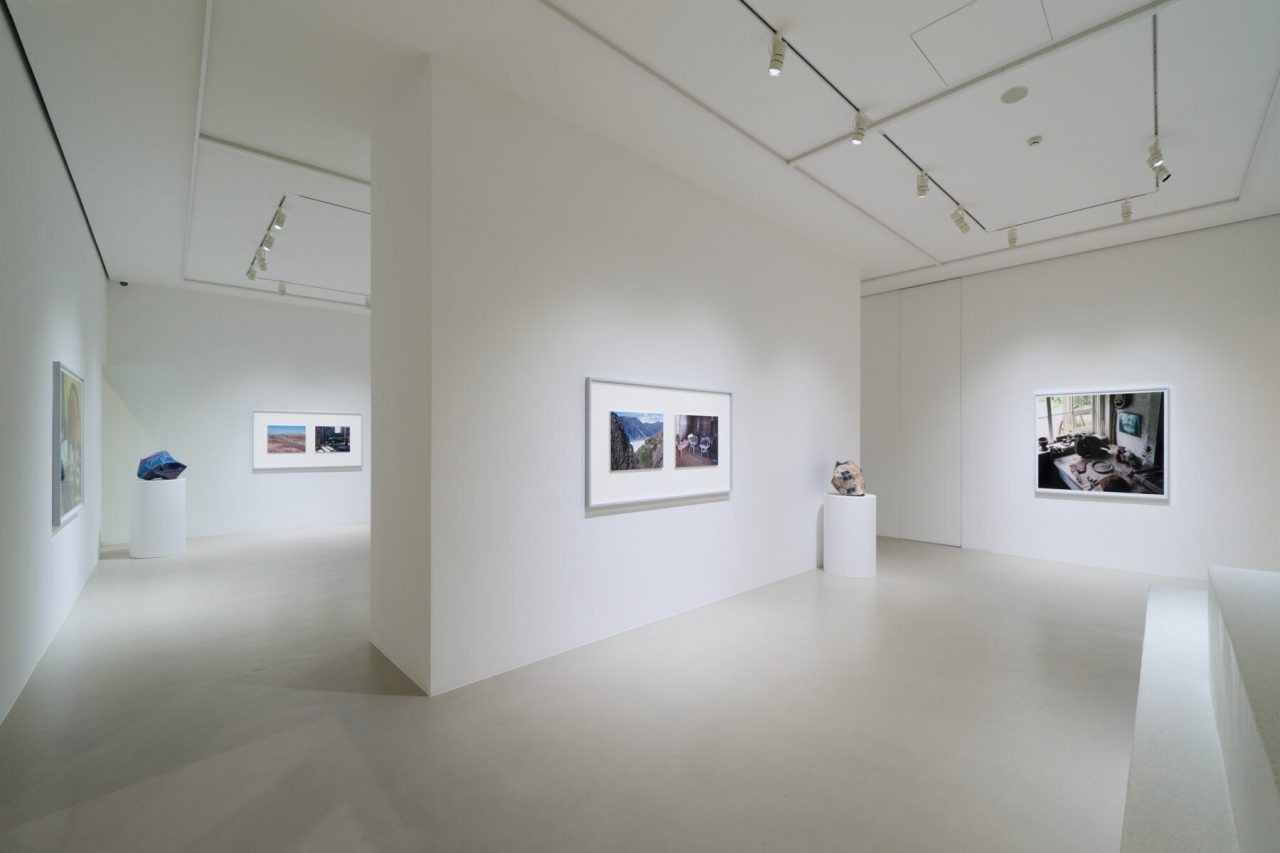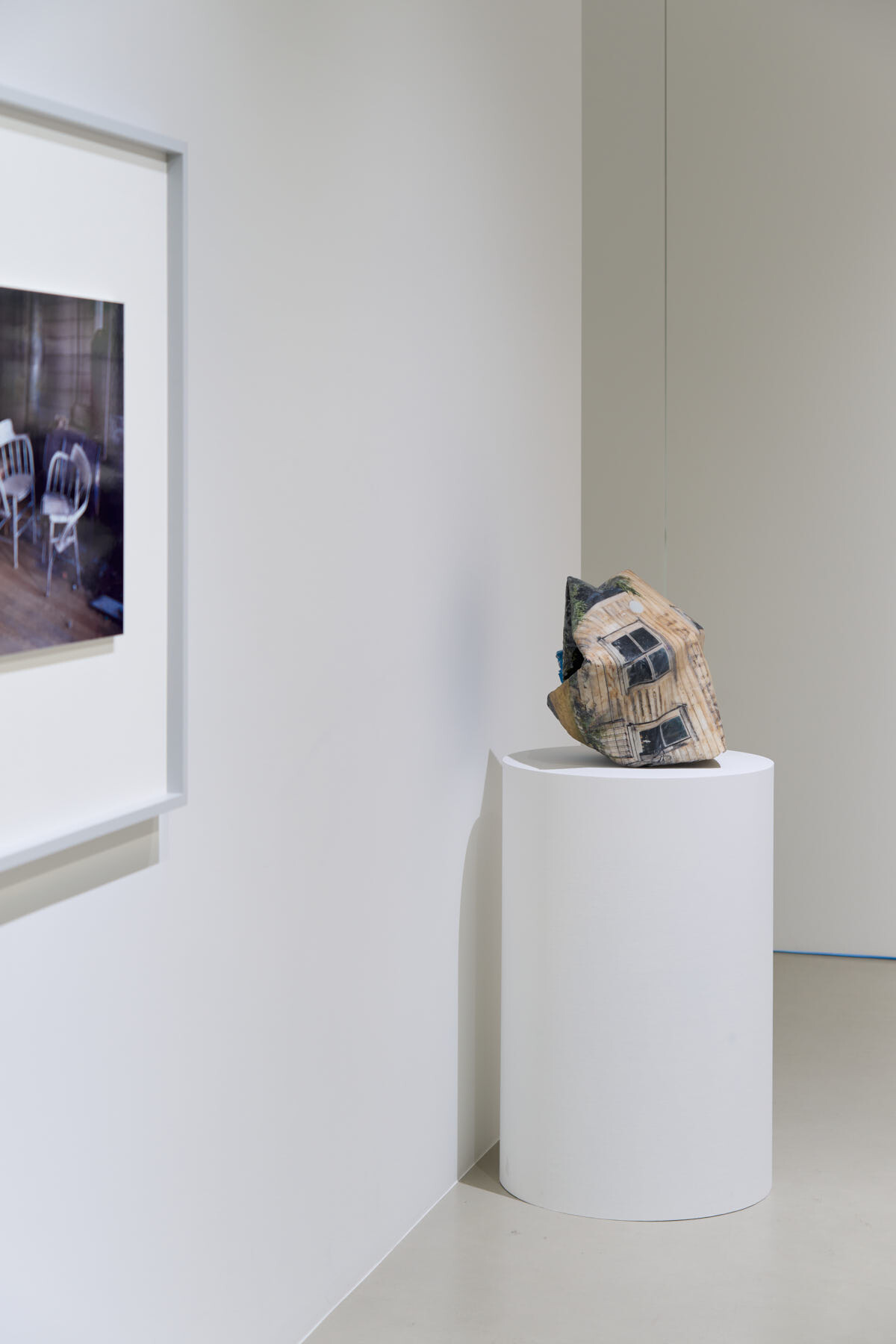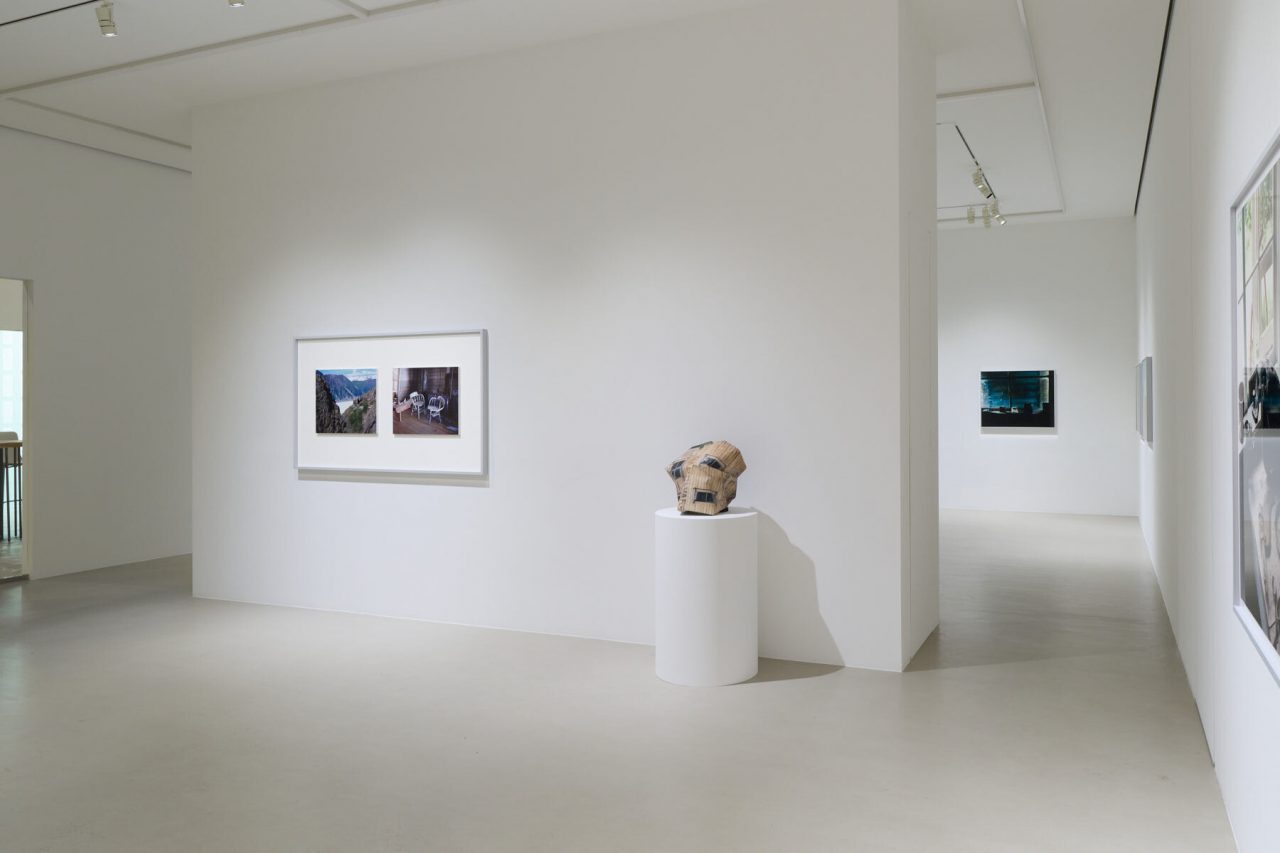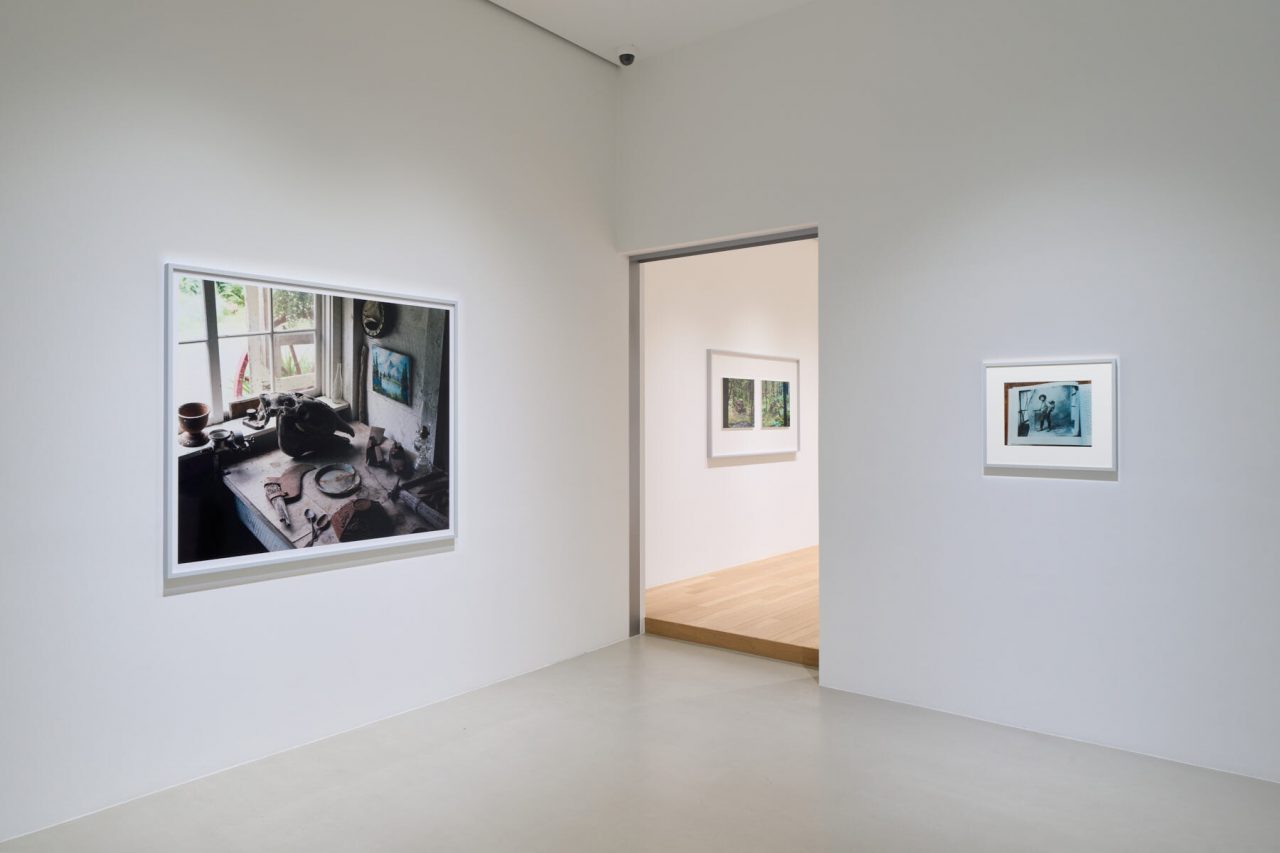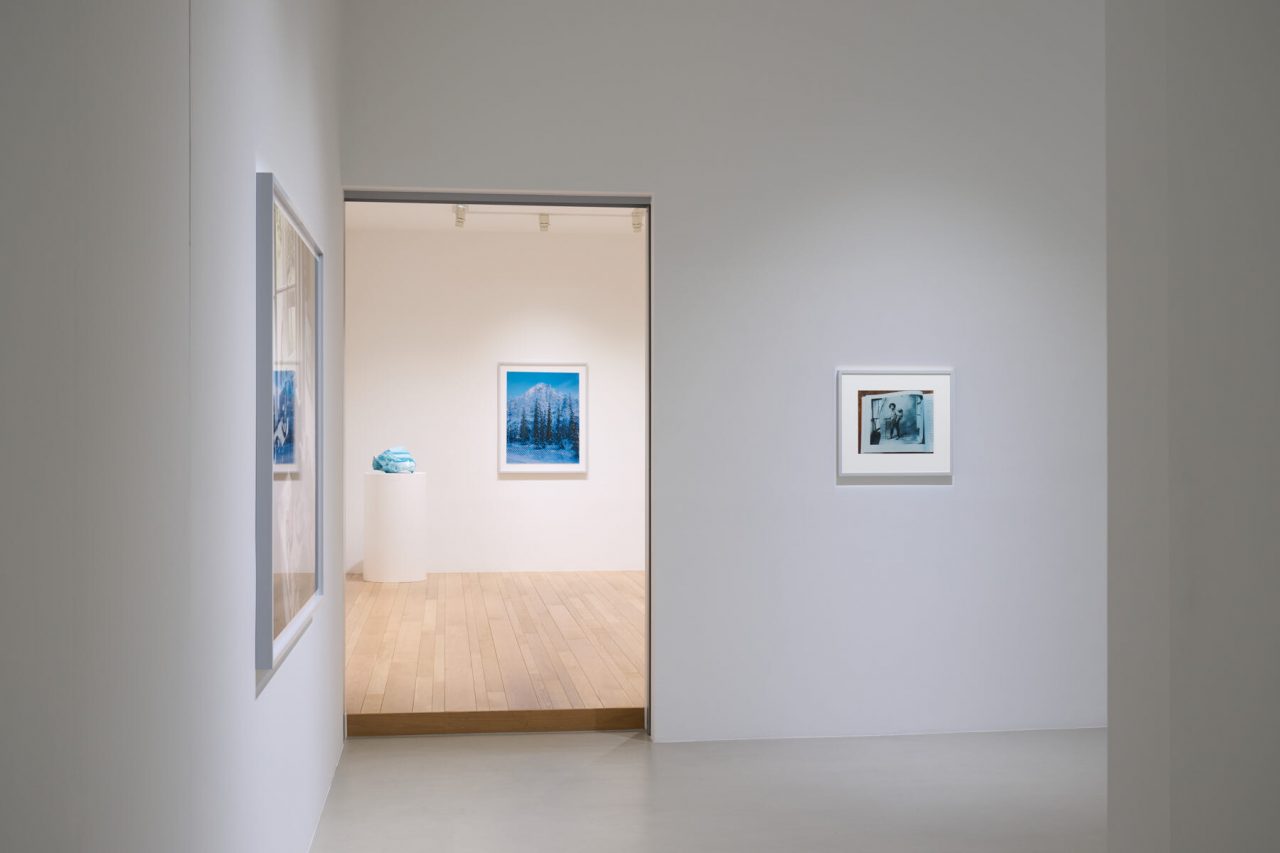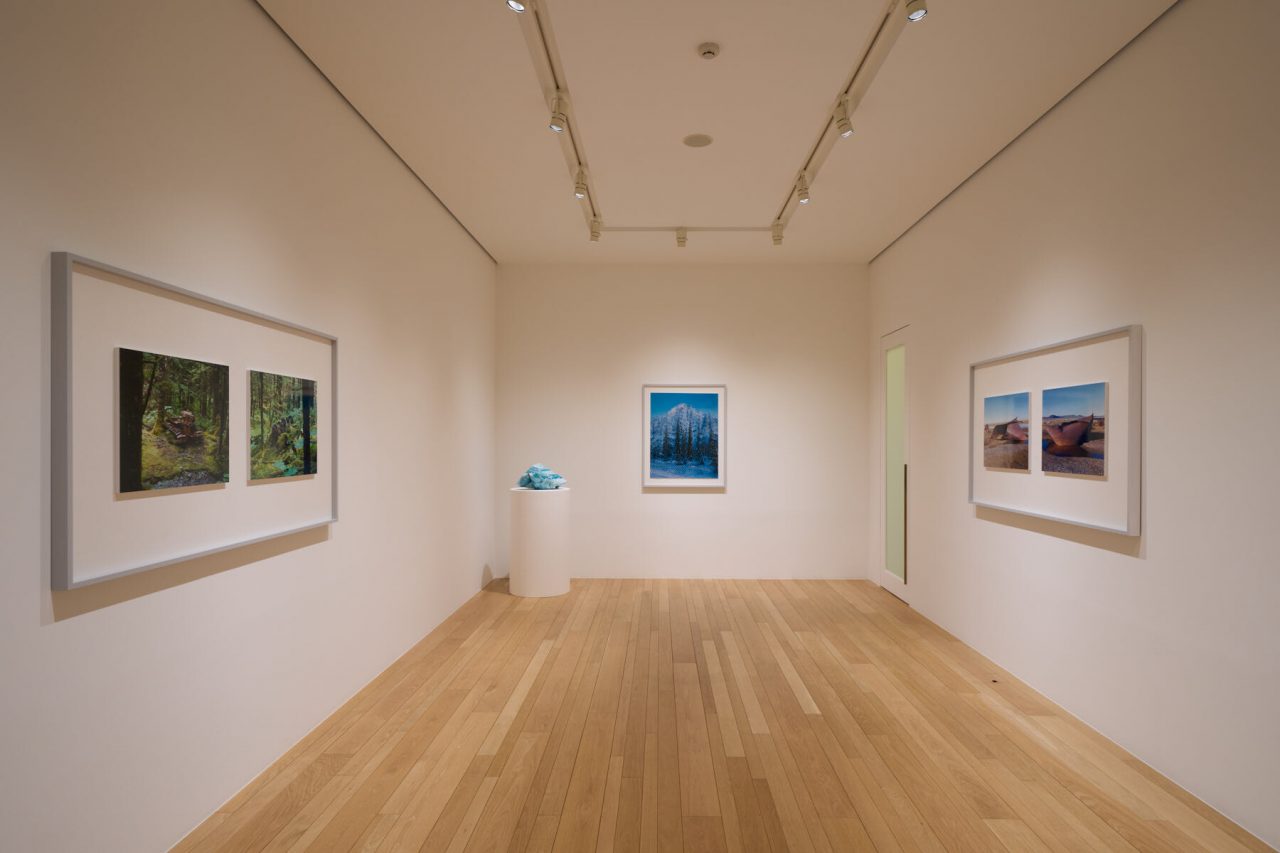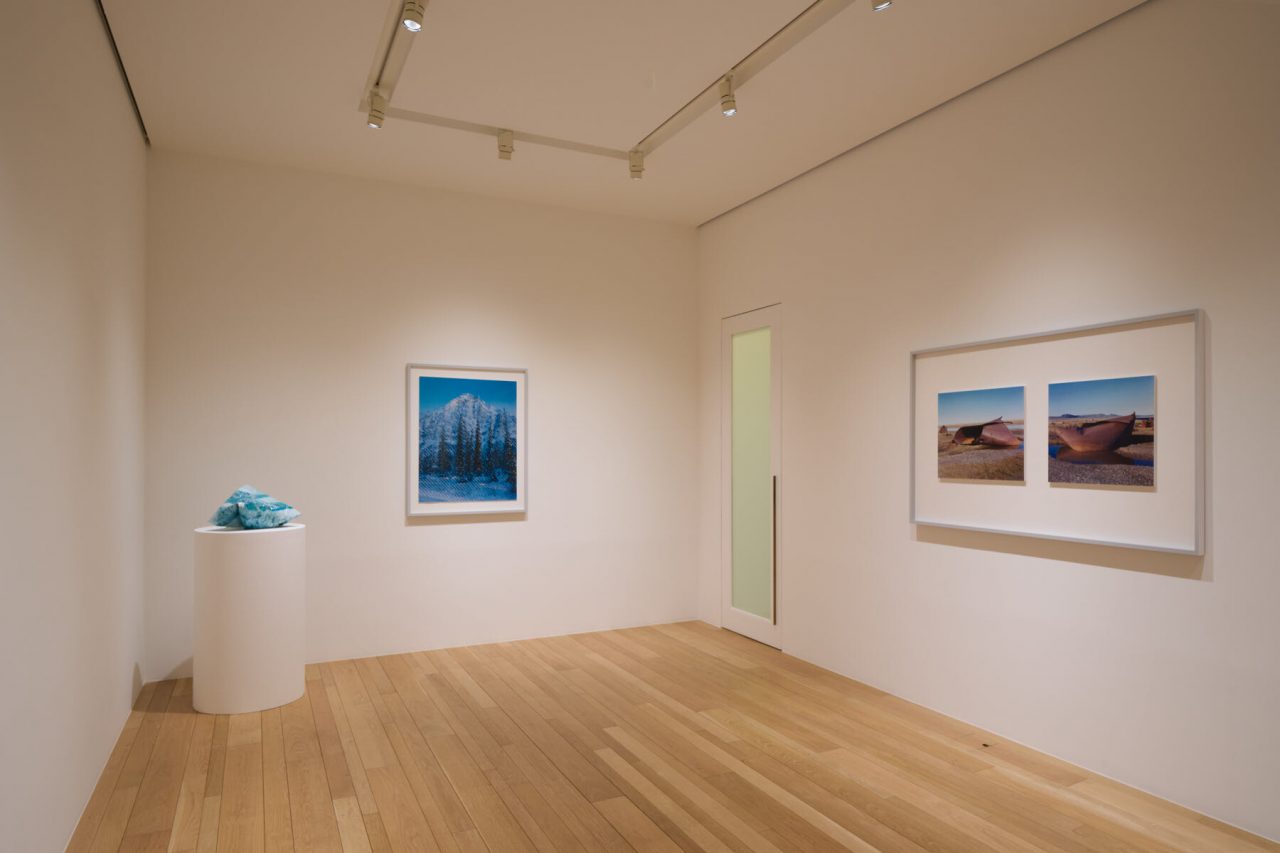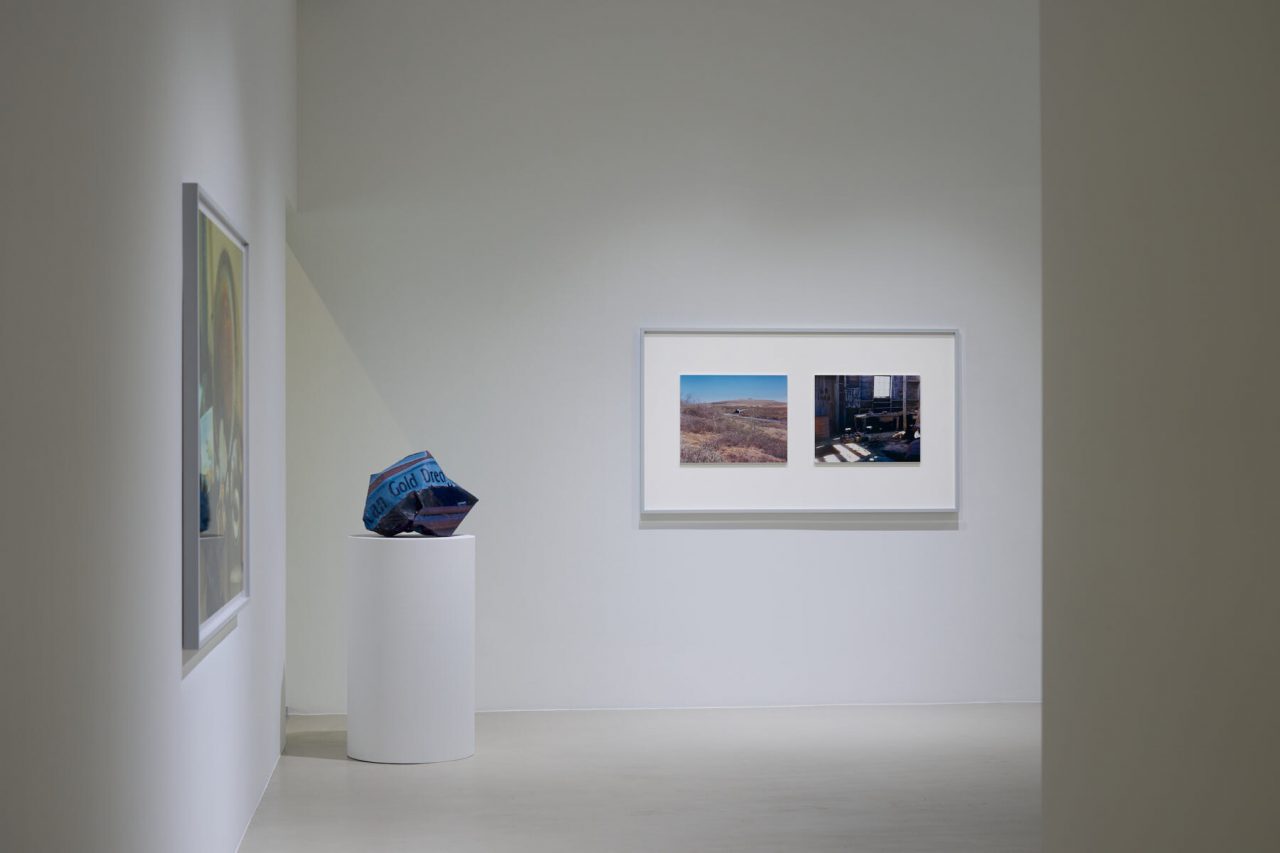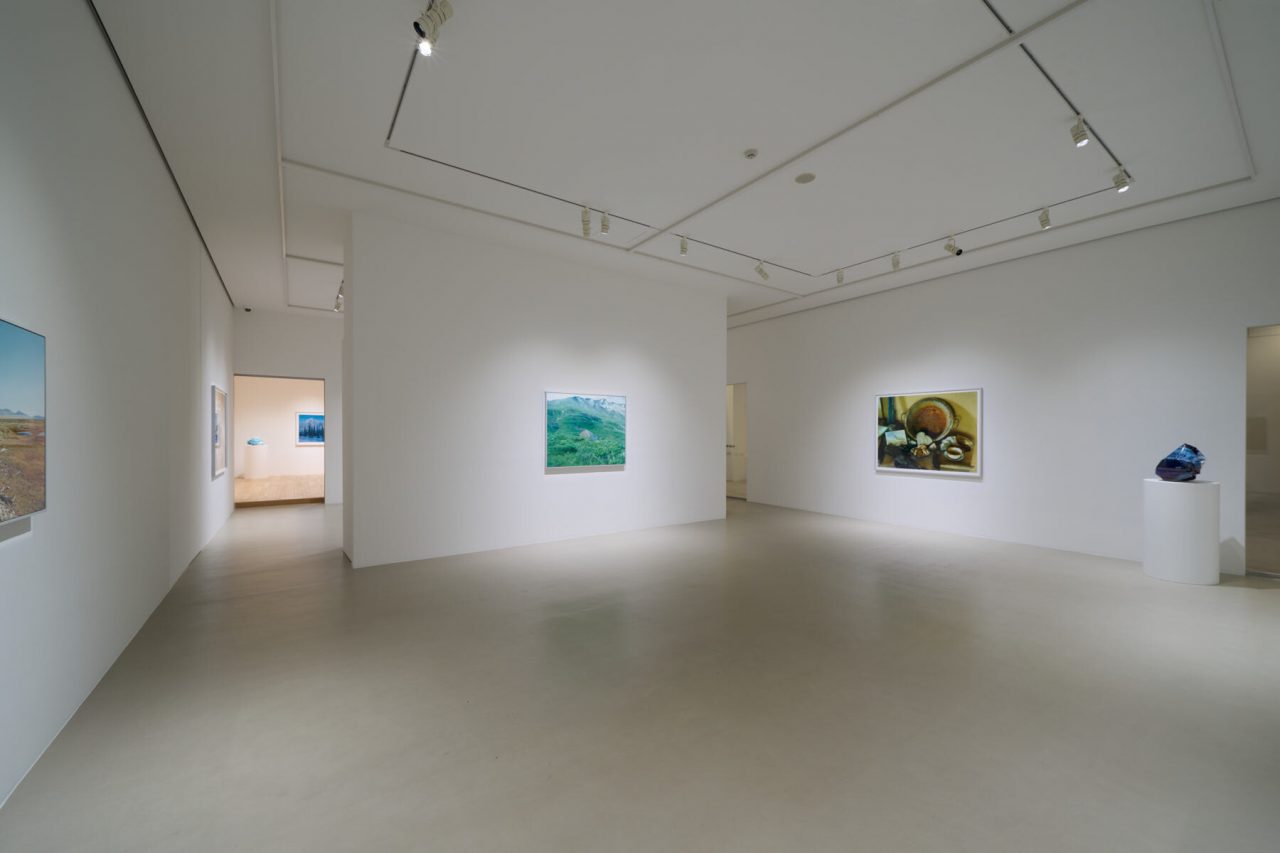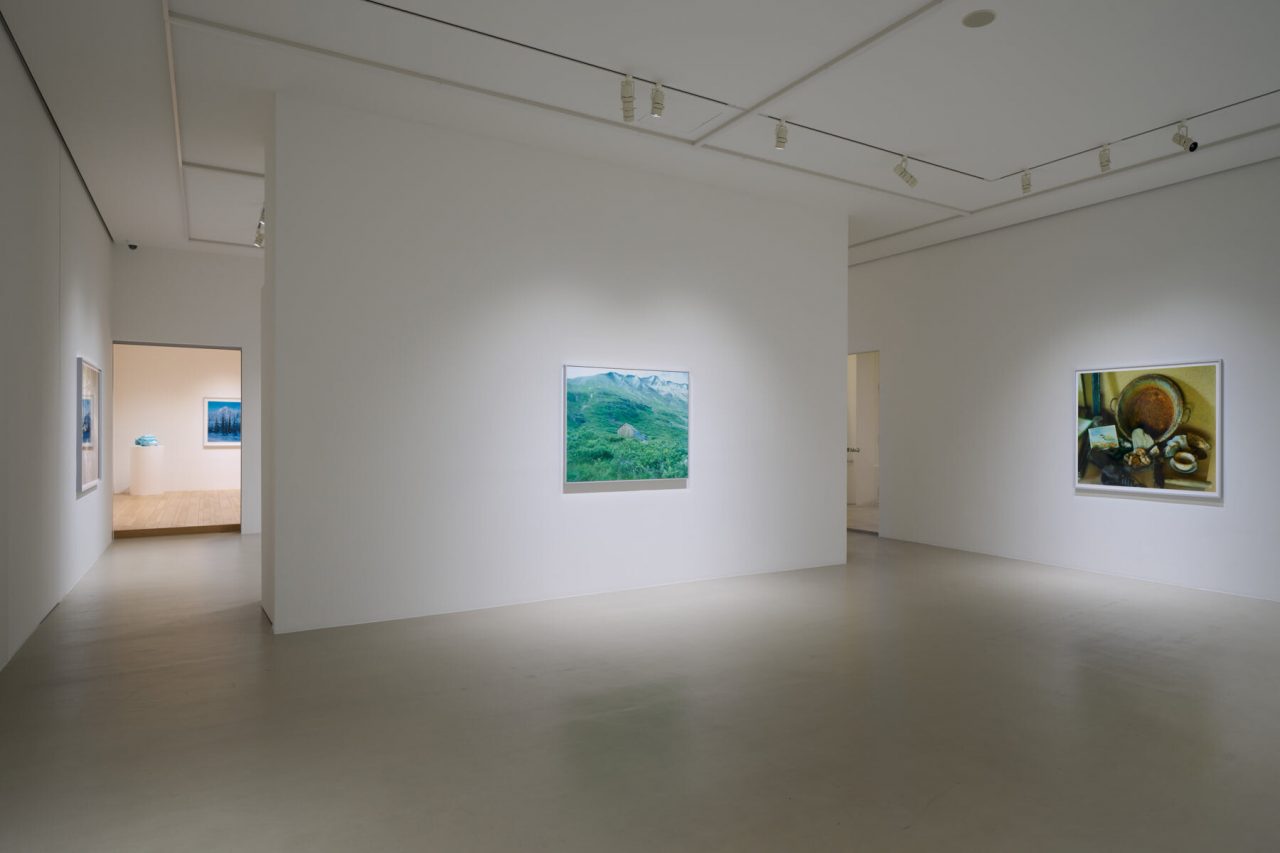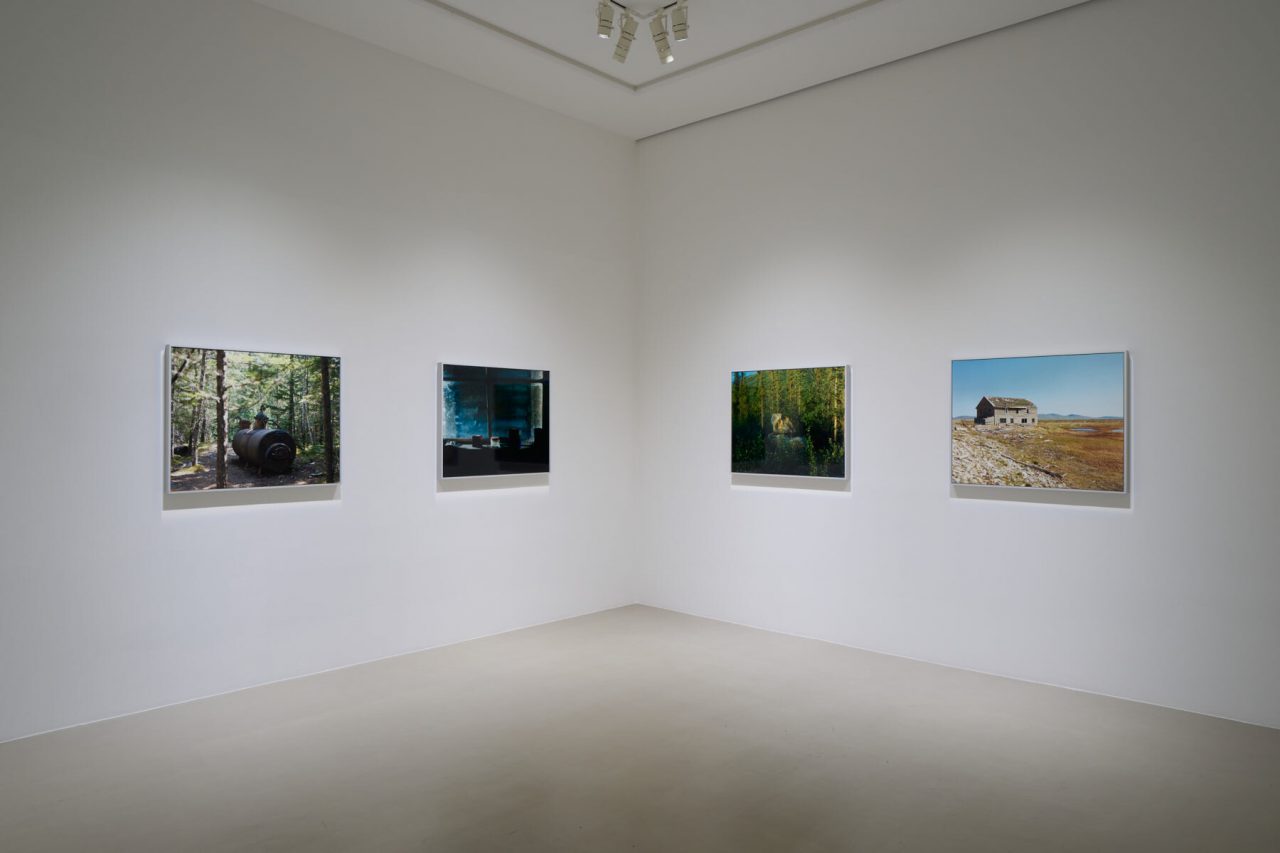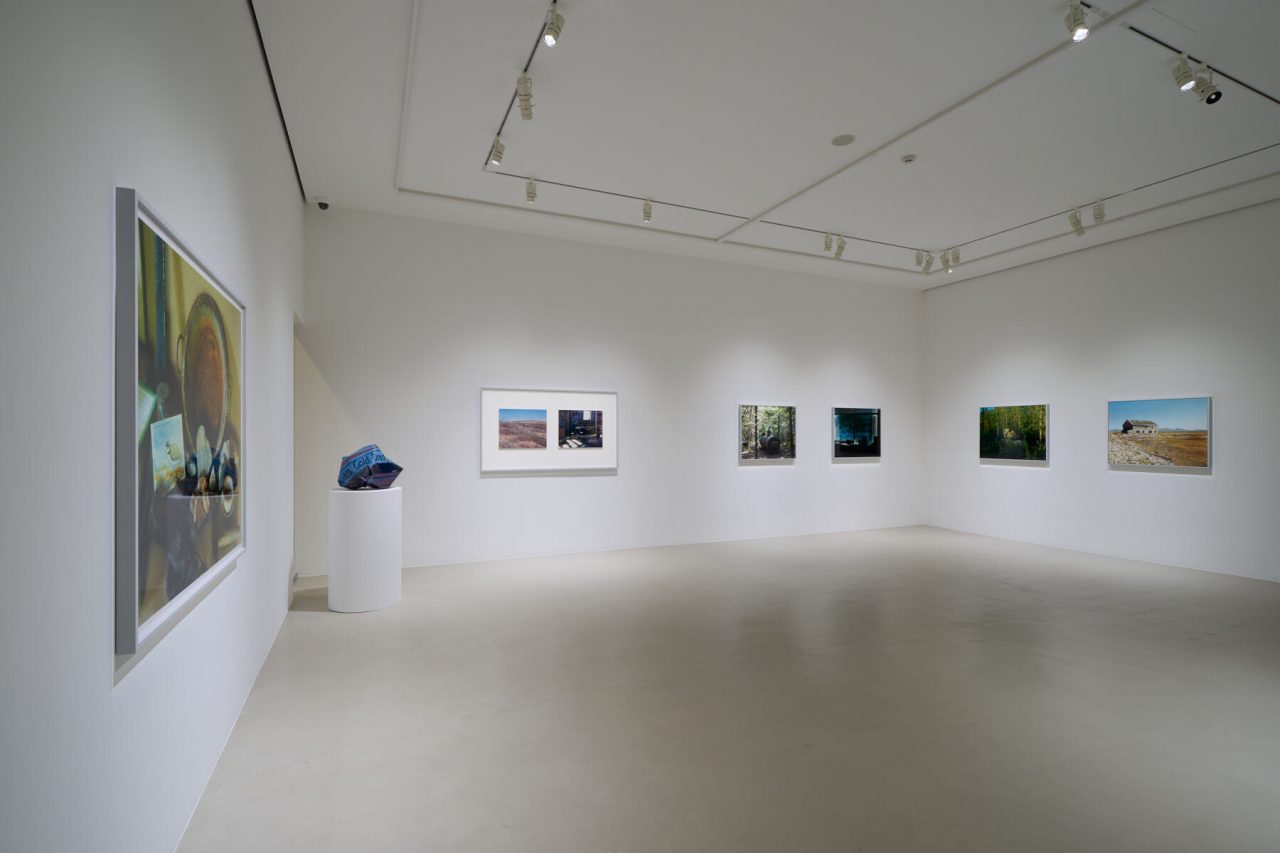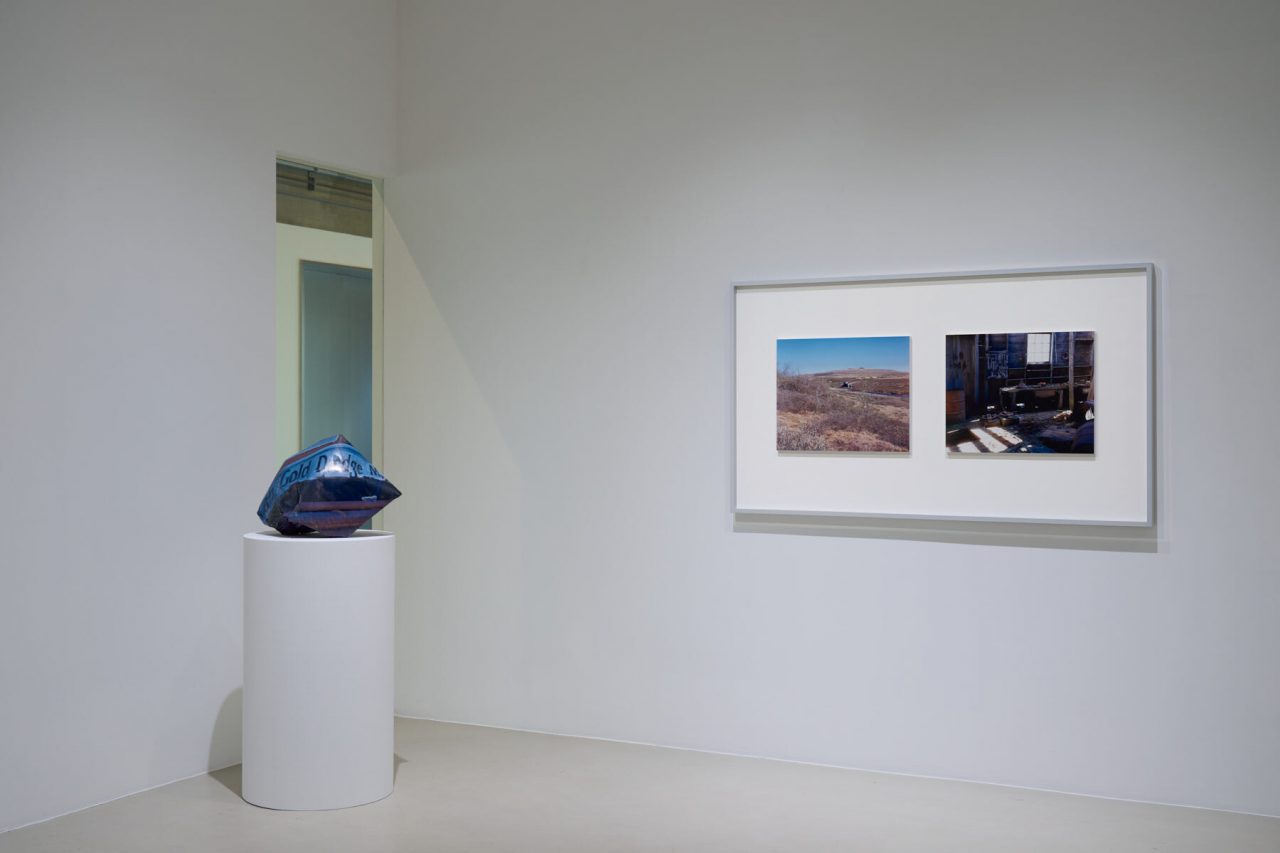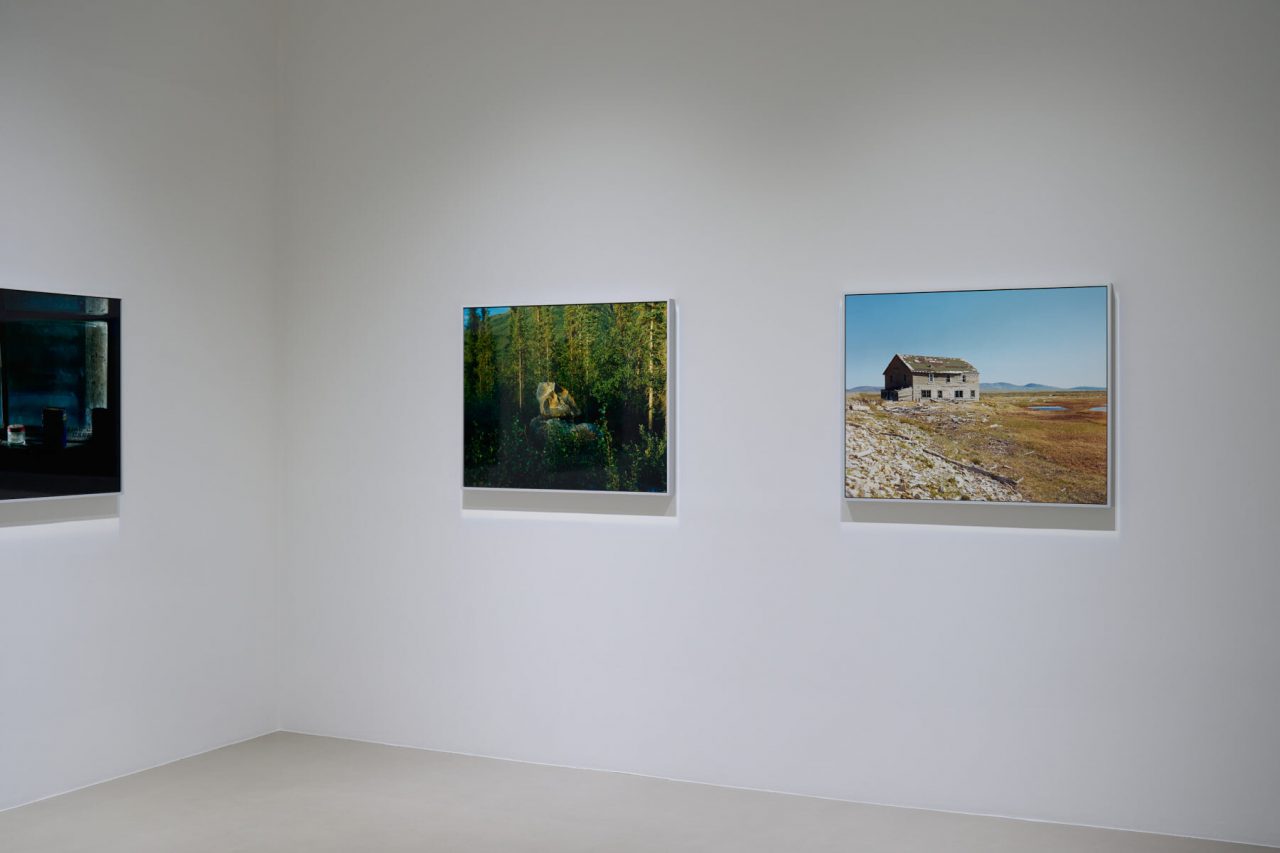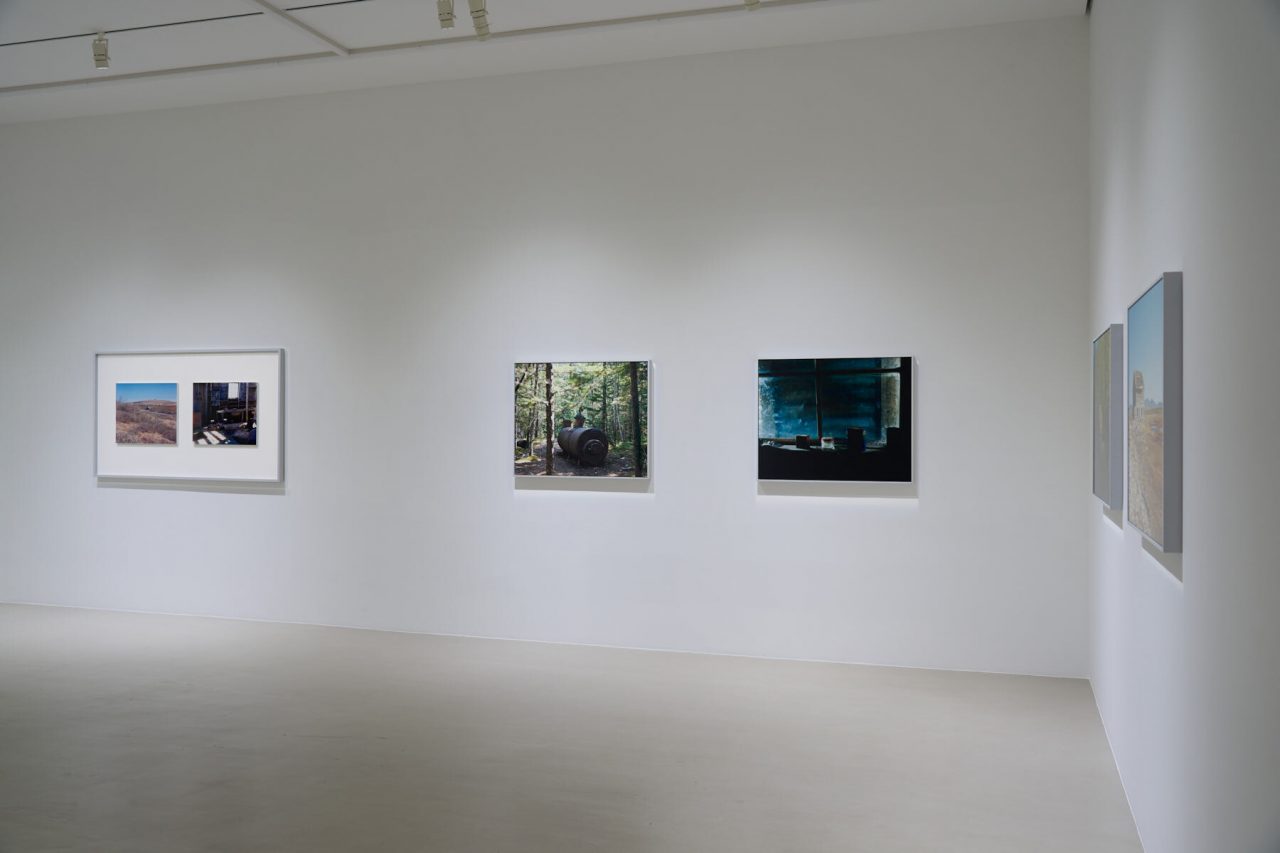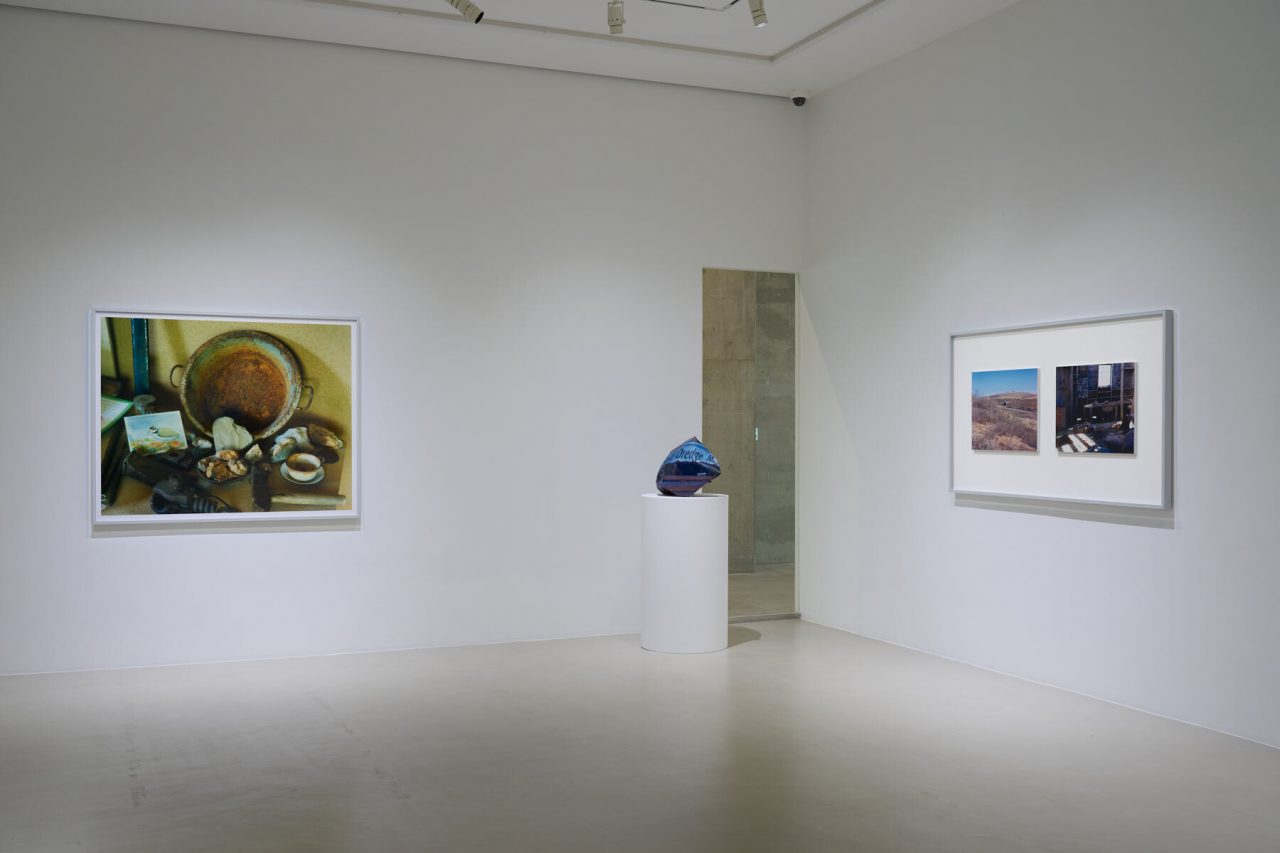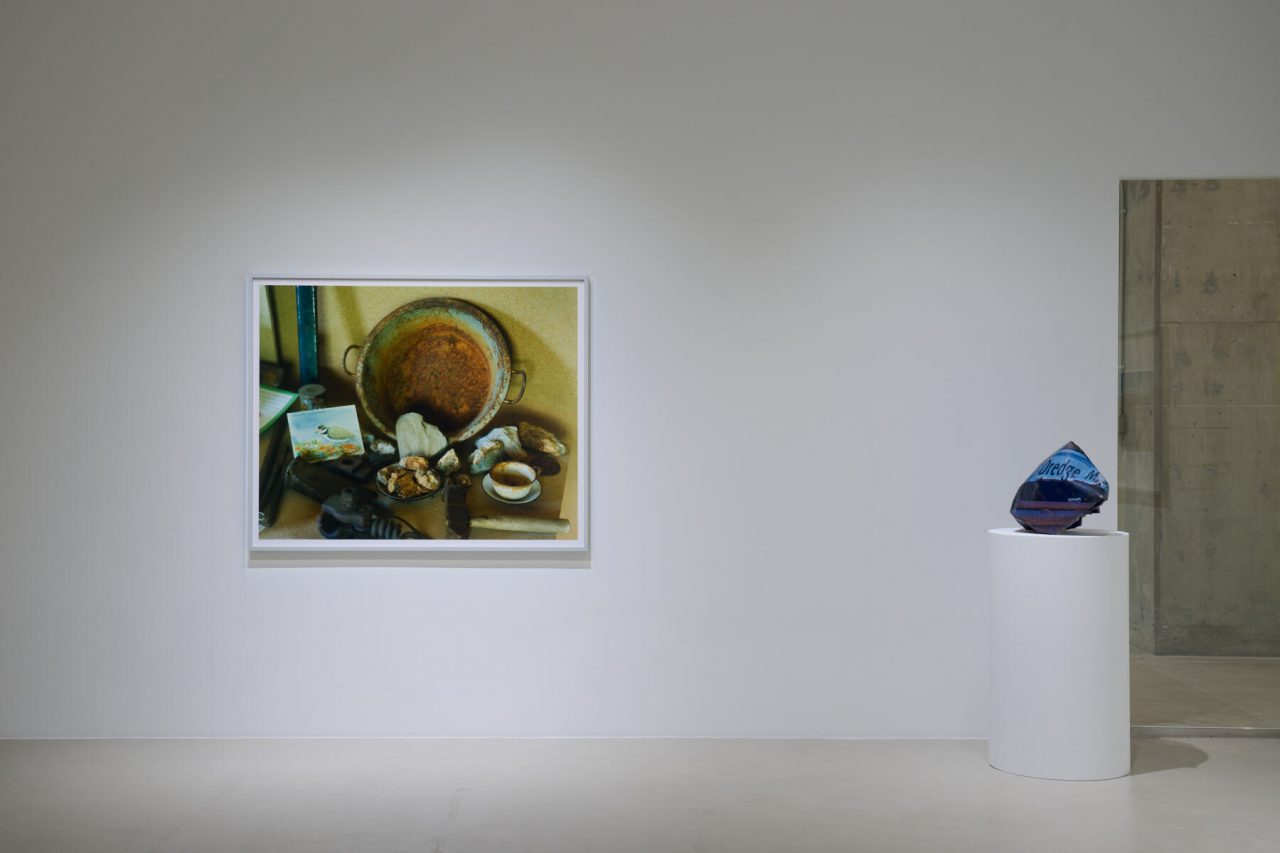Gold Rush Alaska 「Gold Rush Alaska」
Kotaro Nukaga Tennoz
東京
–
Kotaro Nukaga Tennoz
東京
–
「Gold Rush」は写真表現の空間性の再解釈を試みる石塚が、19世紀末のアメリカ、アラスカに起きた「ゴールドラッシュ」という現象を「歴史として彫塑する」シリーズであり、本展では未発表となっていた写真作品の14点(うち3点は2019年ポーラ美術館のグループ展で初出)と、イメージを立体化した写真彫刻の作品3点を展示。
本展は2016年、第8回TOKYO ART BOOK FAIRに併せて開催されたSteidl社によるダミーブックアワード「Steidl Book Award Japan」において、石塚のグランプリ受賞により、同社から出版されることとなったアートブック『Gold Rush Alaska』と連動した展示となります。
アラスカの「ゴールドラッシュ」とは、19世紀末に各地で金が発見され、それまで、細々と狩猟生活を行う原住民たちが小さな集落を作って暮らすだけであった北極圏のこの地に突如として一攫千金を狙った採掘者たちが雲霞の如く集まった現象を指します。文化人類学者、批評家であり、東京外語大学の名誉教授である今福龍太は石塚のアートブック『GOLD RUSH ALASKA』に寄せたエッセイ(原文は英語)を以下のように書きはじめました。
ゴールドラッシュは歴史の廃墟であり、記憶の廃墟である。歴史の廃墟は朽ち果てるだけだが、記憶の廃墟はつきまとう。いや単につきまとうだけでなく、あらたに生みだす。なにか尋常ではない、リアリティの切片を。廃墟に、これほどの執念、情念のうごめきがあることに気づいて、私たちは驚く。見たこともない〈歴史の胎児〉が、この世に現われ出ようとしている。
また、日本の政治学者で思想史家である藤田省三は「写真と社会」の中で、フランスの写真家ウジューヌ・アジェの見たパリの風景について
「取り残された物」が包含する動きは微妙なものである。「取り残されたもの」はそれ自身の前提として既に消えて無くなったものを自己の周囲に持っている。人工的な周囲の除去ではなく、それとは逆に、周囲の消滅を自らの廻りに依然として所有しているからこそ、それは取り残されて在るのだ。だから嘗てあった周囲の物(者)達とのもろもろの関係が影絵となって現われ出ているのでもある。
と述べている。石塚の作品もまさにこの「取り残されたもの」をモチーフとしている。そして、それらが所有する周囲の消滅、それは、かつてのゴールドラッシュという現象であり、金という価値に対する人類の熱狂と欲望。それこそ、石塚がリアリティとともに示すものであり、現れ出ようとする〈歴史の胎児〉ではないかと言えます。
大判カメラを抱え、大自然の懐へと飛び込み、精密な描写で世界を切り取ってみせることで知られる石塚ですが、この「GOLD RUSH」シリーズでは「ストーリーテーラー」つまり、物語の語り手としての非凡さを前面に出していると言えます。アートブックにおけるストーリーの編集にこだわりを持ち、厳密なことで知られるシュタイデル氏が石塚の編集を手放しで認め、そこにはまるで手をつけなかったことを皆が驚いたという逸話からもそれが伺えます。
本シリーズは大きく3つに分類されるイメージによって構成されます。大自然の中に遺された建物や機器を今まさに飲み込もうとする姿を捉えた「ランドスケープ写真」。廃墟となった建物の内部に遺された動物の骨や当時の絵葉書など当時の生活に関わるさまざまなものによって構成された「タブロー写真」。そして、写真家E.I.Heggがアラスカのゴールドラッシュを記録した写真の「複写イメージ」です。
物語は「描写」と「叙述」によって語られるものです。「ランドスケープ写真」と「タブロー写真」は異なる形でゴールドラッシュを「描写」します。前者は人の生活には雄大すぎる北極圏と現在とゴールドラッシュとの時間的な距離を、後者は当時の熱狂とかつてあった者たちやその語り手もが消えてなくなったこと、さらにはここもその外部と同様に風化が進んでいることを描写します。「複写イメージ」は今現在において、当時を語るナレーション(叙述)としてゴールドラッシュを遠い過去に置き去りにさせず、現在に向けて物語を前に進めます。石塚はそれぞれの種類が持つヴィジュアル言語の特性を巧みに構成し、編集し、それぞれが重なりあった部分に単なるドキュメント以上のものを生み出します。
時間が前に進むことを前提とし、歴史が過ぎ去って自分より後ろにある感覚があるとすれば、それは歴史が自分ではない誰かによって語られた物であるからだと言えます。石塚は大判カメラのレンズを向けた先である「前方」から「取り残されたもの」を受け止めます。「取り残されたもの」そのものは前方にあるため、その意味で、まだ歴史ではありません。石塚が「GOLD RUSH」において示しているのは写真による「歴史化」そのものです。つまり、「取り残されたもの」を描写し、物語ることで〈歴史の胎児〉を彫塑し、私たちにみせているのです。本展に併せ、制作された新作の立体化したイメージの写真彫刻作品はその拡張と言えます。
Gold Rush” is a series in which Ishizuka, who has been attempting to reinterpret the spatiality of photographic expression, “sculpts as history” the phenomenon of the “gold rush” that occurred in Alaska, USA at the end of the 19th century. This exhibition features 14 previously unpublished photographic works (three of which will be exhibited for the first time in a group exhibition at the Pola Museum of Art in 2019) and three photographic sculptures that have been sculpted from images. This exhibition is linked to the art book “Gold Rush Alaska,” which was published in conjunction with the 8th TOKYO ART BOOK FAIR in 2016, after Ishizuka won the Grand Prix at the Steidl Book Award Japan, a dummy book award held by Steidl. The exhibition will be held in conjunction with “Gold Rush Alaska,” an art book published by the Steidl Book Award Japan. The “gold rush” in Alaska refers to the discovery of gold in the late 19th century, which suddenly attracted miners to the Arctic Circle, where until then there had been only small settlements of natives who had been hunting and living a meager life. Ryuta Imafuku, a cultural anthropologist, critic, and professor emeritus at Tokyo University of Foreign Studies, began his essay for Ishizuka’s art book “Gold Rush Alaska” as follows The gold rush is the ruins of history, the ruins of memory. The ruins of history only decay, but the ruins of memory haunt. Not only do they haunt us, they give birth to new ones. Something unusual, a slice of reality. We are surprised to realize that there is such an obsession, such a stirring of passion, in the ruins. A never-before-seen “embryo of history” is about to emerge into the world. In “Photography and Society,” the Japanese political scientist and historian of ideas, Shozo Fujita, describes the Parisian landscape as seen by the French photographer Eugène Atget: “The movement encompassed by ‘what is left behind’ is a subtle one. The “thing left behind” has as its own premise something that has already vanished and disappeared in its own surroundings. It is not an artificial removal of its surroundings, but on the contrary, it is left behind because it still possesses the disappearance of its surroundings around itself. Therefore, it is a shadow picture of the relationships it once had with its surroundings. Ishizuka’s work is also a “shadow picture. Ishizuka’s works are also based on this motif of “things left behind. The disappearance of the surroundings that they possess, the phenomenon of the gold rush of the past, and mankind’s enthusiasm and desire for the value of gold are the motifs of Ishizuka’s works. It can be said that this is what Ishizuka shows with reality, the “embryo of history” that is about to emerge. Ishizuka is known for diving into the bosom of nature with a large-format camera and capturing the world with precision, but in this “GOLD RUSH” series, he brings to the forefront his extraordinary skills as a “storyteller,” in other words, a narrator. This is evidenced by the anecdote that Steidel, who is known to be particular and strict about the editing of stories in art books, was surprised that Ishizuka’s editing was so unreservedly approved and that he did not touch it at all. The series is composed of three main categories of images. Landscape photographs” capture buildings and equipment left behind in the great outdoors, just about to be swallowed up. Tableau photographs” are composed of animal bones, postcards from that period, and various other objects related to life at that time that were left behind inside abandoned buildings. The “Tableau Photographs” are composed of various objects related to life at the time, such as animal bones and postcards left inside abandoned buildings, and “Photocopied Images” of photographs taken by photographer E.I. Hegg documenting the Alaskan Gold Rush. The story is told through “description” and “narrative.
